When boom times go bust, this is what gets left behind.
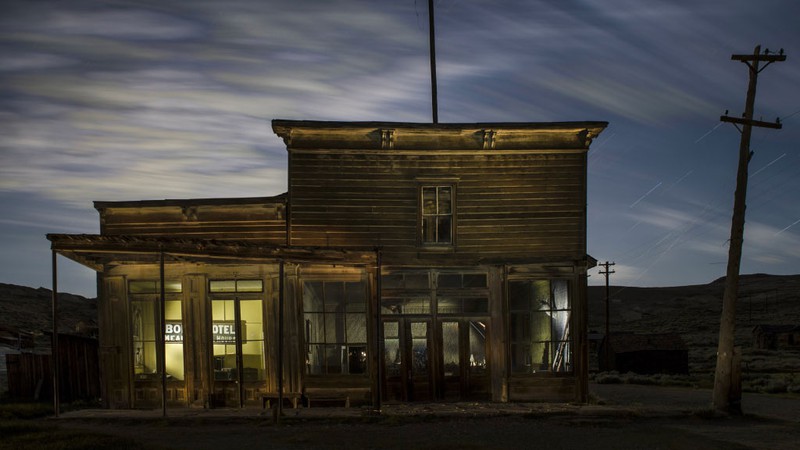
A state park since 1962, Bodie is one of California’s best-known ghost towns. Read about nine more below. JLeditor CC BY-SA 3.0
As a once-bustling center of population dwindles, one of two things can happen.
A handful of diehard residents might stick around, certainly not a sufficient number to constitute a healthy and vibrant community but just enough that a settlement remains active. Or, as has happened around 300 times in California’s history, everyone might depart, with ramshackle houses, crumbling roads and even civic amenities left behind.
Today, we look at some of the most celebrated examples in the Golden State of the second scenario, what are more commonly known as ghost towns. Here are 10 to see.
California’s most famous ghost town was, for a few years in the late 19th century, a booming, teeming and dangerous mining community, topping 5,000 residents in 1880. After the boom ended and most of the population quickly left, more and more of Bodie’s buildings began to sit vacant. They were often purchased by a local miner named J. S. Cain, who’d buy them with belongings still inside that he’d leave untouched.
“The Cains still own Bodie, and still believe it has a future,” Cain’s daughter-in-law Ella M. Cain wrote in The Story of Bodie, a 1956 book. “It is well guarded by the faithful watchman, Martin Gianettoni.”
Alas, Gianettoni and the town’s other two remaining residents had left by 1950 and the town became a California State Park in 1962. It is kept in a state of arrested decay, meaning that buildings aren’t fixed up but aren’t allowed to deteriorate.
While fires in 1892 and 1932 destroyed much of Bodie, a significant number of buildings still stand, drawing in travelers willing to make the long trek east of Yosemite and over the Sierra Nevada mountains from places like Sacramento or the San Francisco Bay Area.
Bodie’s not the only ghost town that caters to tourists. The 1971 book Ghost Towns of the West described Calico as a “commercial ghost town near Barstow in the Mojave Desert.” A former silver and mining community, it had been purchased in the 1950s by the founder of Southern California amusement park Knott’s Berry Farm with most of its buildings restored.
The community has continued to thrive in different ways, being declared California’s Official Silver Rush Town in 2005 and operating today in the San Bernardino County Regional Parks network. Its website notes that “along with its history and attractions, Calico Ghost Town has shops, restaurants and offers camping, hiking and off-roading.”
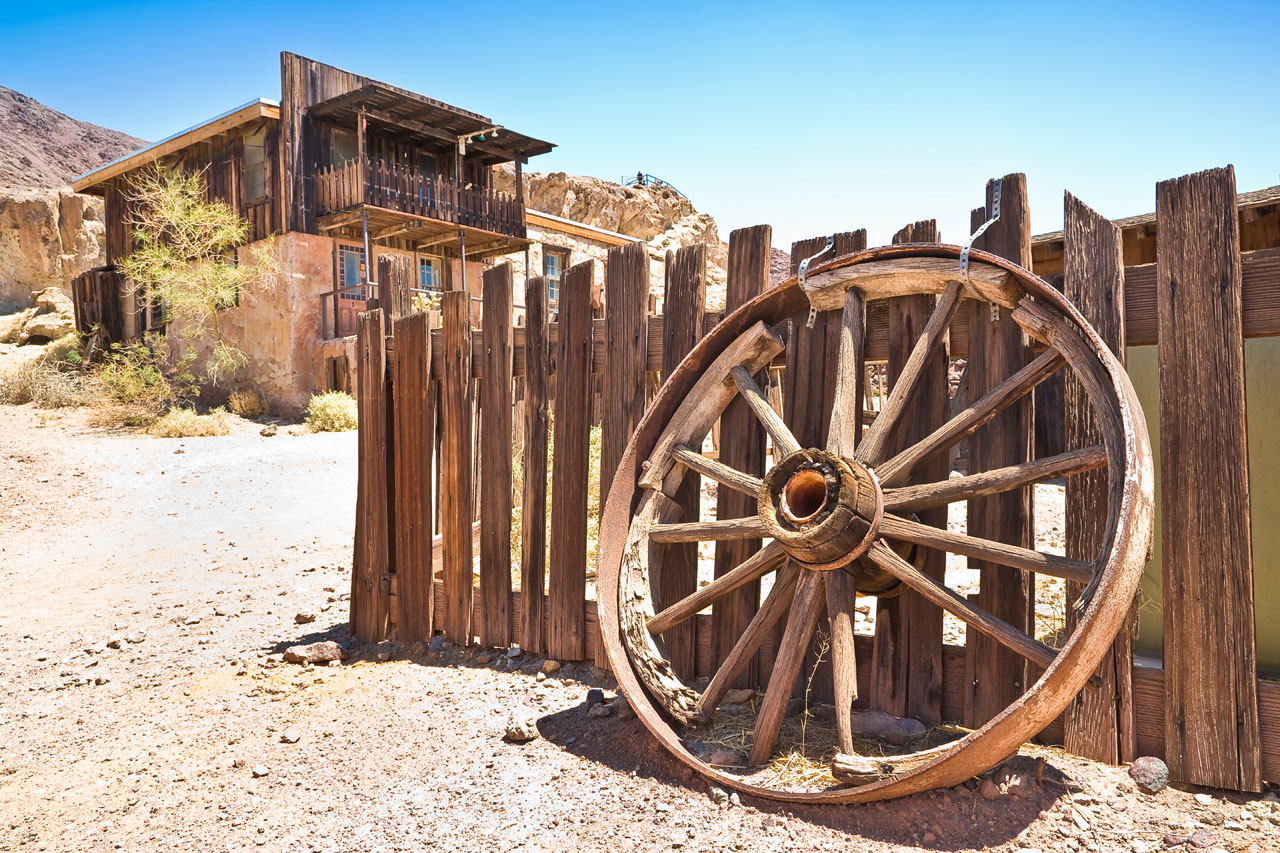
This once-powerhouse mining community near the Inyo County town of Lone Pine sat remarkably well-preserved for about a century after its last residents left.
The 2012 book Ghost Towns of California puts it well about this former eastern California mining community, writing, “Cerro Gordo is, like Bodie, one of the best ghost towns in the American West. Bodie … has many more buildings but it also has something Cerro Gordo does not—many more visitors.”
Remi Nadeau’s 1965 book Ghost Towns and Mining Camps of California noted that Cerro Gordo’s points of interest included the American Hotel, which opened in 1871. The hotel burned down in 2020 along with two other historic buildings, though town owner Brent Underwood—who purchased Cerro Gordo for $1.4 million two years before the fire—told Insider that 20 other buildings remained in town.
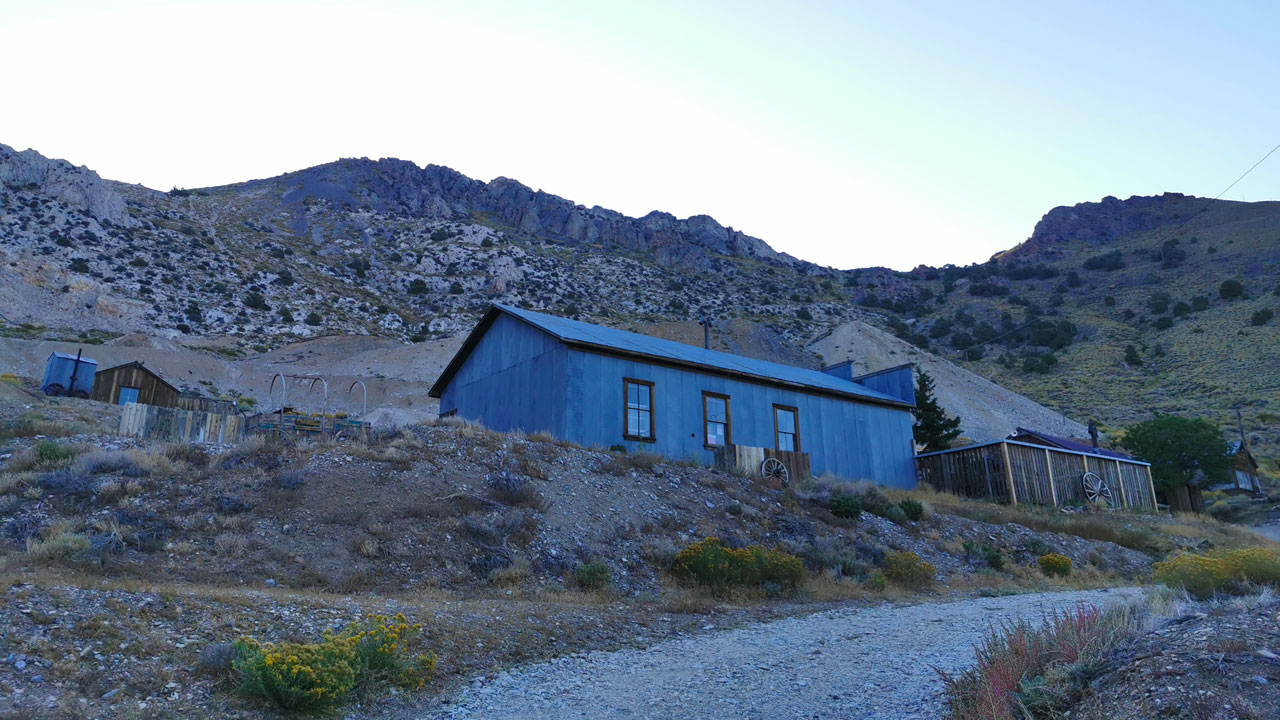
Amtrak riders heading south from Oakland to Santa Clara will want to look fast off the right side of the train to see this Bay Area ghost town. Drawbridge, located near Fremont and now part of the Don Edwards San Francisco Bay National Wildlife Refuge, is visible for maybe a minute as the train zips by.
Ghost Towns of the West noted the town’s history, writing, “Built about 1880 as a duck-hunting and gambling retreat, Drawbridge hit its peak during the roaring twenties, when special trains hauled in hundreds of good-timers every weekend. But the Depression killed the town.”
Drawbridge’s final resident departed in 1979. Now, it’s illegal and unsafe to visit the town, as the San Francisco Bay Wildlife Society notes, with Drawbridge’s remaining buildings slowly sinking into marsh.
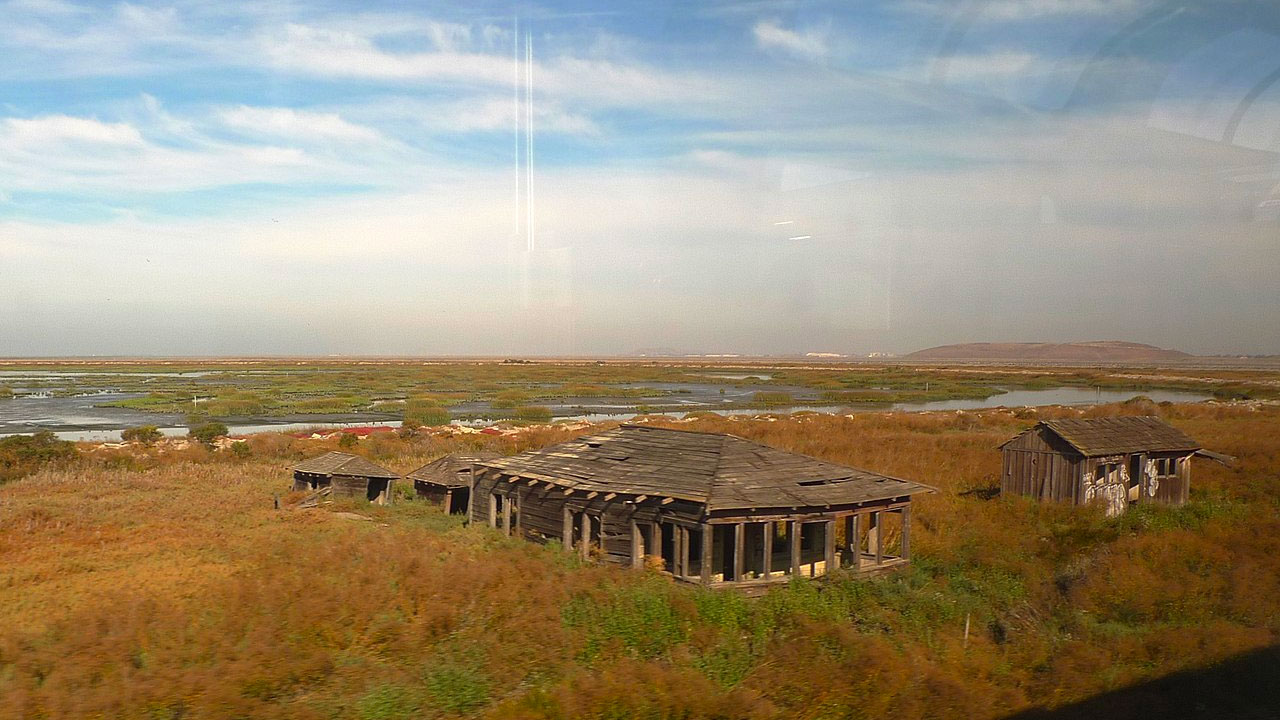
While the Cain family bought Bodie long ago, opportunities to purchase ghost towns still sometimes present themselves. One recent example is Eagle Mountain, a former mining community in Riverside County. The Los Angeles Times reported in May 2023 that the 10,000-acre site had sold to Ecology Mountain Holdings for $22.58 million.
“For now, the buyer’s motive remains a mystery,” the Times noted. “The listed agent for Ecology Mountain Holdings, a Cerritos-based limited liability company that incorporated in March, did not immediately respond to a request for comment.”
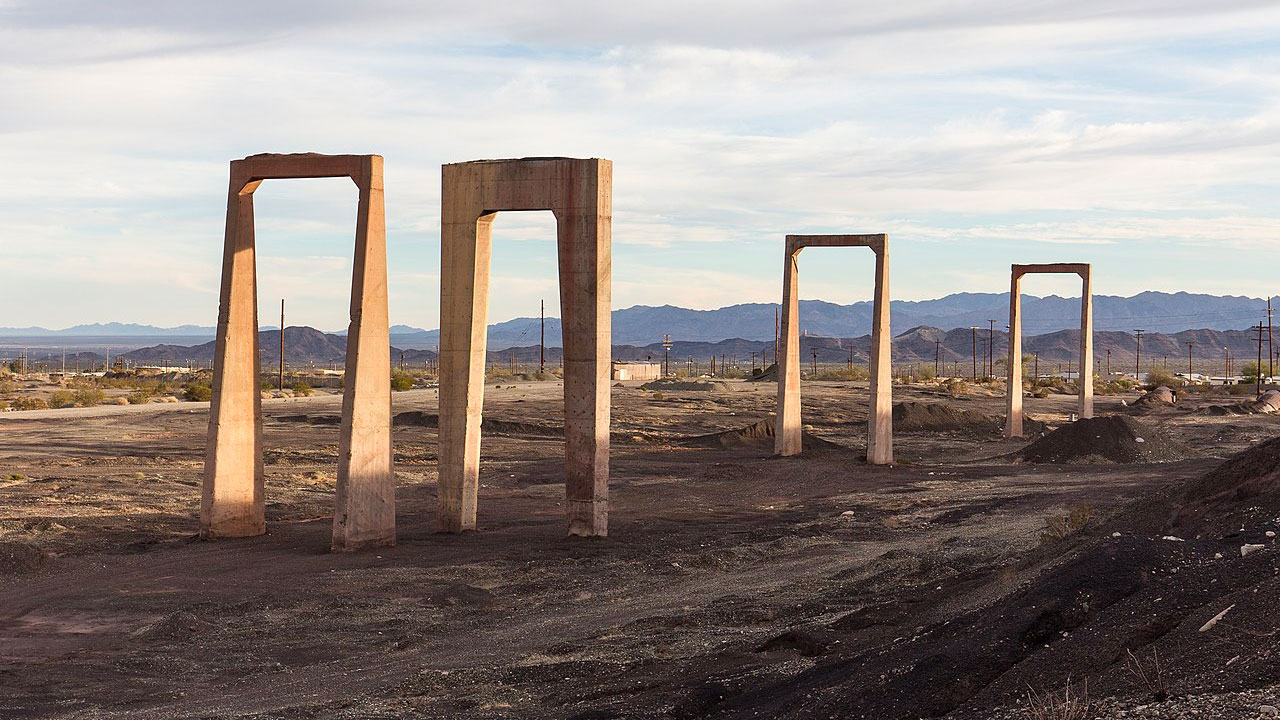
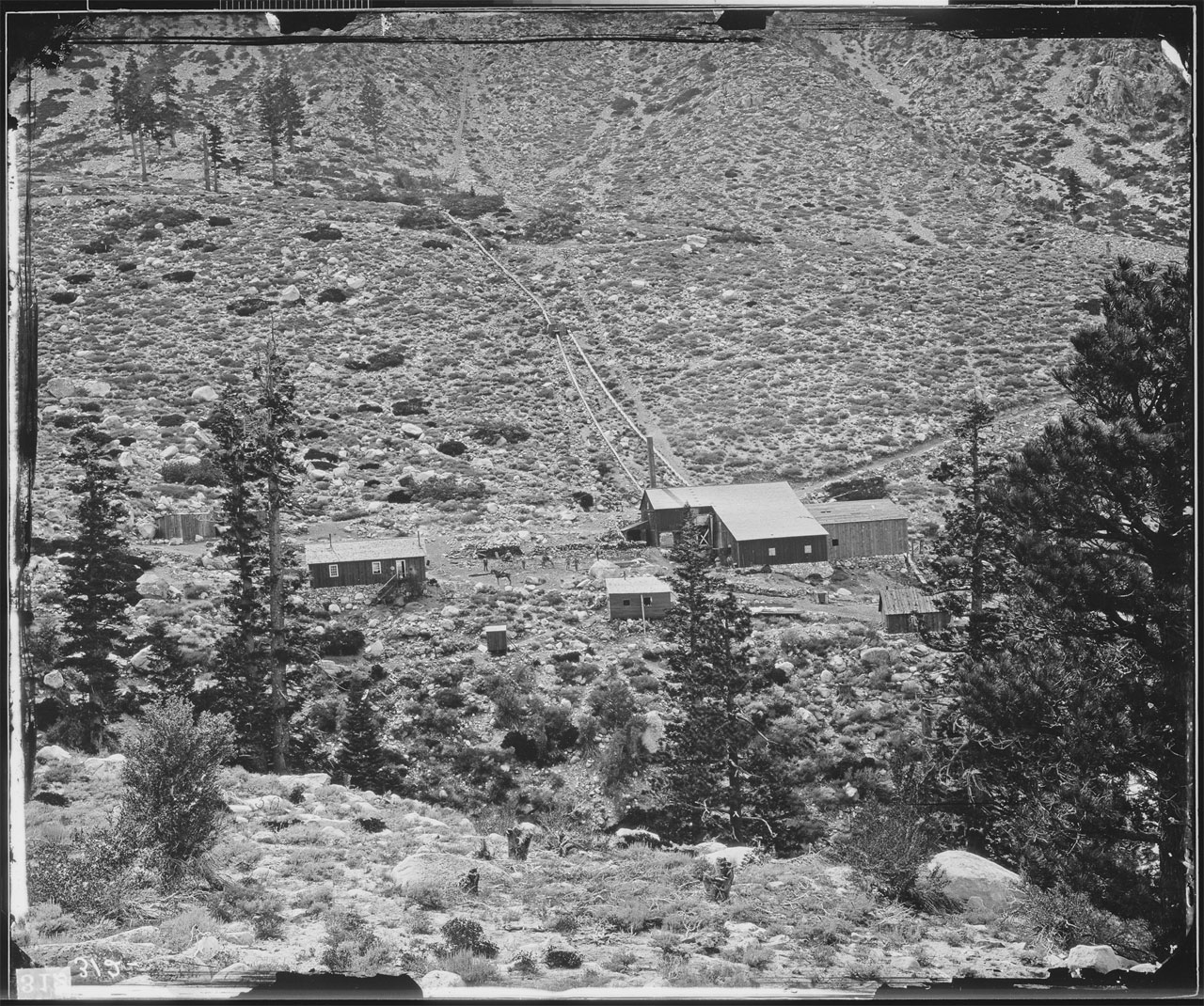
Named for a famed Union ship that sunk a Confederate ship during the Civil War, Kearsarge was an Inyo County mining community in the late 1860s. “The district lies about ten miles south of Fort Independence, and since its discovery has been visited by a large number of prospectors,” the Placer Herald noted on June 10, 1865. “The ledges are generally small but exceedingly rich.”
The community didn’t last long, though, as Nadeau wrote that most of Kearsarge’s buildings were destroyed by an avalanche on March 1, 1867.
“That night the population of Kearsarge moved down to Owens Valley,” Nadeau wrote. “Mining activity continued, but although good ores were worked, the mine never paid for itself and was finally deserted.”
Scant evidence has remained of the town in recent years, namely foundations of a water tank, an old tipple and what appears to be the foundation of the former rail station.
There are other enticing ghost towns within driving range of Bodie, such as Lundy, where gold was discovered in 1879. Mining operations were plentiful for a time, with the May Lundy Mine producing around $2 million before shutting down in 1898.
Ella M. Cain included a chapter on Lundy in her book about Bodie, writing, “When God put gold in Lundy canyon He put it in the prettiest and choicest spot old Mother Nature had to offer; lofty peaks a touchin’ the sky, deep gorges, waterfalls, streams all bordered with quakin’ asp and Jeffrey pines, and a lake that nestled like a gem ‘atween the mountains, and reflected on her bosom all the beauties of nature.”
Mining operations continued in Lundy until around the turn of the 20th century. While Lundy Lake, created from the building of a dam, covered some of the old town, other remnants have remained, such as rail tracks and part of a pioneer cemetery. It is also now a popular fishing area.
Those willing to make a 7.5-mile desert hike can be rewarded by seeing the buildings of Panamint City, a former mining town that dates to 1873.
In its heyday in the mid-1870s, Panamint had around 5,000 residents, a mile-long street and an establishment known as the Hotel de Bum, according to Donald Miller’s 1978 book, Ghost Towns of California. Miller wrote that Panamint’s name came from a notoriously lazy prospector named Pete who promised that, one day, he’d “Pan-a-mint” of gold.
By the time of Nadau’s book in 1965, much of what had been in Panamint at its height had vanished, albeit with some signs of what once was.
“Though cloudbursts have left little of the Panamint that was, the camp still displays many stone walls, a frame house, the brick stamp mill, and a bucket tramway which furnished it with ore from a leading mine,” Nadeau wrote.
Other ruins of the town have continued to exist since then, such as some of its former smelter and an ore cart.

This one’s a slight stretch to call a ghost town, as no buildings remain. But there’s a good story behind it and people can still travel to the area to get an idea of Sacramento’s history.
Essentially, before Sacramento was raised to prevent the town from being regularly besieged by crippling floods, pioneer John Sutter contemplated locating the city on higher ground. He looked to light, rolling hills in what is now Sacramento’s South Land Park neighborhood to build a small community, Sutterville, in 1844.
A historic marker for the Sutterville Brewery noted that it was one of five buildings built in 1853. A Civil War-era military encampment, Camp Union, opened nearby in 1861. And for a time, a small community close to the Sacramento River existed. But while Sacramento began to grow in the mid-19th century, as it sorted out its flooding issues and more and more settlers arrived, Sutterville stagnated.
Today, the Sacramento Zoo is located about where Camp Union stood, while the Sutterville Brewery was razed in 1952, making it the last of Sutterville’s buildings to go. Aside from markers for the brewery and Camp Union, other remnants of the community include a road and local elementary school named Sutterville.
Some ghost towns are remote mining communities that see a quick, predictable end when mines are depleted or public demand drops. Others like Whiskey Flat, also known as Kernville, are submerged by the building of dams, with whatever structures or foundations left far underwater.
That said, California’s periodic droughts make it so that some of these towns reappear every now and again as water lines drop. Such was the case with Whiskey Flat, which reemerged briefly in 2022 as Lake Isabella, which covered it, went to under 10 percent of its normal capacity.
On a side note, the town had a long and sometimes colorful history before going underwater, with SFGATE reporting that the classic Clint Eastwood film The Good, the Bad and the Ugly was inspired by stories of a man from Whiskey Flat.
Article exploring songs, books, movies and other works from art and culture which feature our beautiful state.